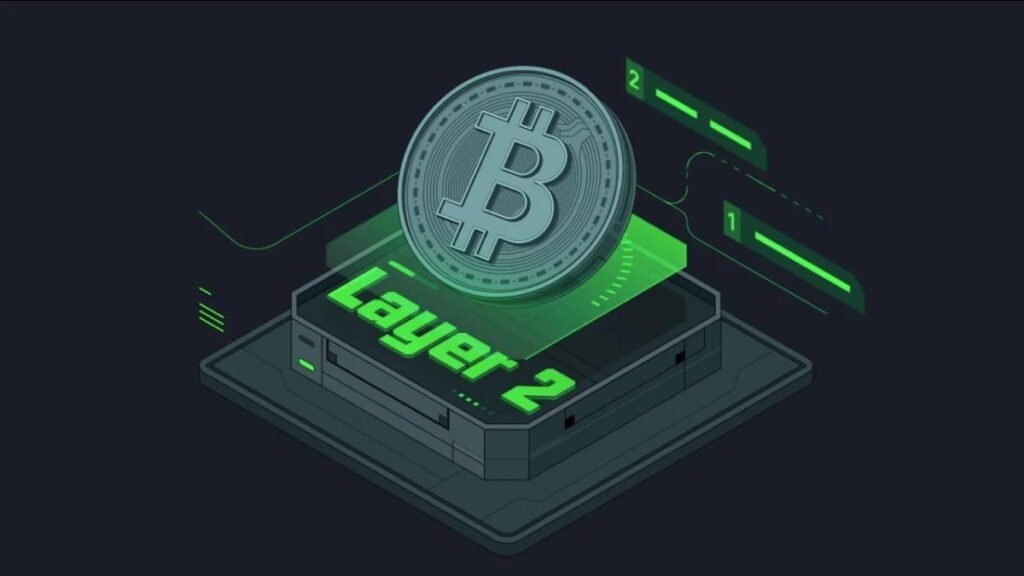
Bitcoin Layer-2 Enhancements: A Deep Dive
Bitcoin Layer-2 technologies are essentially upgrades on top of Bitcoin’s core layer aimed at improving scalability and introducing new functionalities. These protocols enhance transaction speed, lower costs, enable the use of smart contracts, and broaden Bitcoin’s utility, all while preserving the original layer’s security integrity.
In this exploration, we delve into the world of Bitcoin Layer-2 enhancements, discussing their significance, potential risks, and much more. Stay with us to fully grasp these concepts.
Understanding Bitcoin Layer-2 Protocols
Layer-2 protocols for Bitcoin are designed to address the network’s scalability challenges and boost its capabilities by operating atop the foundational layer. They bring forth benefits such as better scalability, advanced programmability, security retention, and broader utility.
These solutions aim to mitigate Bitcoin’s blockchain limitations like slow transaction speeds, limited throughput, and high costs. By facilitating transactions off the primary blockchain, Layer-2 technologies can significantly enhance transaction capacity and reduce waiting times, thereby elevating the network’s efficiency.
Additionally, Layer-2 advancements make possible the execution of sophisticated smart contracts, despite the base layer’s limitations. This unlocks potential for diverse applications, from decentralized finance (DeFi) and non-fungible tokens (NFTs) to alternative market platforms, extending Bitcoin’s utility far beyond a simple peer-to-peer payment mechanism.
The Necessity of Layer-2 for Bitcoin
Layer-2 protocols are essential for Bitcoin due to the inherent limitations of its blockchain in swiftly and economically processing transactions. With a capacity of about seven transactions per second, the network can become congested during peak periods, leading to elevated fees and delays.
By managing transactions off-chain, Layer-2 solutions enhance Bitcoin’s scalability and practicality for everyday transactions, such as micro-transactions and retail purchases.
Premier Bitcoin Layer-2 Solutions
Highlighted below are leading Bitcoin Layer-2 solutions:
- The Lightning Network: Introduced in 2018, it facilitates rapid, cost-effective transactions through payment channels for off-chain Bitcoin transfers.
- Rootstock (RSK): This platform allows for smart contracts and decentralized applications (DApps) within the Bitcoin ecosystem, utilizing a bidirectional peg to move Bitcoin between the main chain and a sidechain.
- Stacks Protocol: Known previously as Blockstack, it supports smart contracts and DApps directly on Bitcoin, leveraging microblocks for speed and a Proof-of-Transfer mechanism for security.
- Liquid Network: A sidechain built on the Elements blockchain, offering quicker, more private transactions compared to the primary Bitcoin network. It introduces Liquid Bitcoin (L-BTC) and is overseen by a consortium of stakeholders.
These Layer-2 options present diverse features and functionalities, catering to various needs within the Bitcoin community.
Functionality of Bitcoin Layer-2s
Bitcoin’s Layer-2 operates by facilitating transactions away from the main blockchain, which decreases congestion and boosts scalability. They utilize several approaches:
- State Channels: Direct, often encrypted, channels for off-chain transactions, maintaining a comprehensive record of transactions between parties. Only the final balances are settled on the main blockchain.
- Rollup Chains: These consolidate numerous transactions into a single package for the main blockchain, with two variants: Optimistic Rollups (assume transactions are valid unless contested) and ZK Rollups (use proofs for transaction verification), both aiding in reducing the main chain’s burden.
- Sidechains: Independent blockchains connected to the main Bitcoin network, allowing for customizable rules to expedite transactions.
These technologies offer a balanced mix of security, decentralization, and efficiency, collectively enhancing Bitcoin’s performance and usability.
Risks Associated with Bitcoin Layer-2s
Despite their advantages, Layer-2 solutions introduce certain risks:
- Security Risks: New potential vulnerabilities may arise, separate from those of the main Bitcoin blockchain.
- Centralization Concerns: A concentration of control among fewer nodes or validators in some Layer-2 solutions could introduce risks of influence or collusion.
- Technical Complexities: The intricate nature of Layer-2 mechanisms demands ongoing expertise and development.
- Interoperability Issues: Integrating Layer-2 solutions with existing systems can present challenges, potentially limiting their effectiveness.
- User Experience: Layer-2 solutions may add complexity for users, necessitating education and adaptation to new processes.
While offering substantial improvements in scalability and functionality for Bitcoin, users should approach Layer-2 solutions with awareness of their associated risks.
Conclusion
Bitcoin’s Layer-2 protocols serve as efficient assistants, streamlining transactions off the main blockchain for enhanced speed and affordability. Notable examples include the Lightning Network, Rootstock, Stacks Protocol, and Liquid Network, each employing unique methods such as state channels and sidechains. However, users should navigate these solutions with caution, given the potential for security concerns and added complexity.
Not a financial advice.
